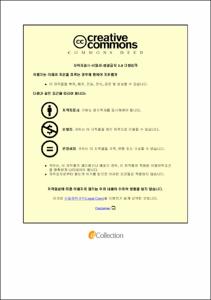전기 자동차 배터리 냉각용 알루미늄 평판형 멀티 미니채널 써모사이폰의 열적 특성
- Abstract
- The design and development of pure and hybrid electric vehicles(PEV, HEV) is becoming a major focus area for the automotive industry due to their high energy efficiency. The effective operation of batteries plays a key role in the overall EV efficiency.
Thermosyphon is a kind of heat pipes that transfers heat through convective heat transfer using phase change phenomena of working fluid and, it operates by continuous gravity circulation of the working fluid. It consists of an evaporator section at the bottom of thermosyphon and condenser section at the upper place of thermosyphon. Thermosyphon has main advantage which can manufacture easily because there is no wick structure. The advantage makes it possible to make to various shapes of products.
The present research aims at proposing the flat plate multi-mini channel thermosyphon technology as a promising candidate for the thermal management of electronics mounted aboard vehicles. This study evaluated the effect of a various orientation on thermal performance in an flat plate multi-mini channel thermosyphon. A flat plate thermosyphon filled with Novec-7100 (charging ratio 20, 40, 60 voL.%) has been characterized at heat power 6W and 14W. The thermosyphon is an extruded thin aluminum plate of size 170W x 210H x 16T [mm] and had 56 channels. Installation angles of inclination is pitching, rolling, and yawing are used. Results indicate that the thermosyphon operated in the pitching, rolling, and yawing position allow it to reach good performance in terms of start-up heat input, effective thermal conductivity and operation stability. The results were summarized as follow:
1. It is confirmed that it has a constant heat flux for operation. The effect of charging ratio variation showed the best performance at 20%.
2. The thermosyphon with q=450W/m² and q=1000W/m² showed smooth flow behavior with enough cooling performance. At the heat input of 6W and charging ratio is 20%, the temperature source and the sink was 40~45℃. And 14W and charging ratio is 20%, the temperature of heater(battery surface) was 60~65℃.
3. The experimental result according to the pitching inclination angle, the thermosyphon operates at more than 3° and the rolling inclination angle, the thermosyphon operates at more than 30° and the yawing inclination angle, the thermosyphon operates in the whole angles (0 to 90°).
4. In the multi-mini channel thermosyphon, the limiting condition of the inclination angle need to bend the condensation side by 3 to 5° to overcome it.
- Issued Date
- 2019
- Awarded Date
- 2019. 2
- Type
- Dissertation
- Publisher
- 부경대학교
- Affiliation
- 부경대학교 대학원
- Department
- 대학원 냉동공조공학과
- Advisor
- 김종수
- Table Of Contents
- 목 차
Abstract ii
List of figures v
List of tables v
Nomenclatures vi
제 1 장 서 론 1
1.1 연구 배경 1
1.2 Li-ion battery 및 thermosyphon 개요와 냉각시스템 연구동향 3
1.2.1 Li-ion battery의 개요 3
1.2.2 Thermosyphon의 개요 5
1.2.3 배터리 냉각 시스템 연구동향 8
1.3 연구목적 11
제 2 장 실험장치 및 방법 12
2.1 Thermosyphon의 변수와 작동유체 선정 12
2.2 실험장치(Multi-mini channel thermosyphon) 16
2.3 실험 조건 18
2.4 실험 방법 20
제 3 장 실험결과 및 고찰 22
3.1 충진율에 따른 작동 특성 25
3.2 경사각에 따른 작동 특성 30
3.3 열유속에 따른 작동 특성 35
제 4 장 결론 38
참 고 문 헌 39
- Degree
- Master
- Files in This Item:
-
-
Download
 전기 자동차 배터리 냉각용 알루미늄 평판형 멀티 미니채널 써모사이폰의 열적 특성.pdf
기타 데이터 / 926.94 kB / Adobe PDF
전기 자동차 배터리 냉각용 알루미늄 평판형 멀티 미니채널 써모사이폰의 열적 특성.pdf
기타 데이터 / 926.94 kB / Adobe PDF
-
Items in Repository are protected by copyright, with all rights reserved, unless otherwise indicated.